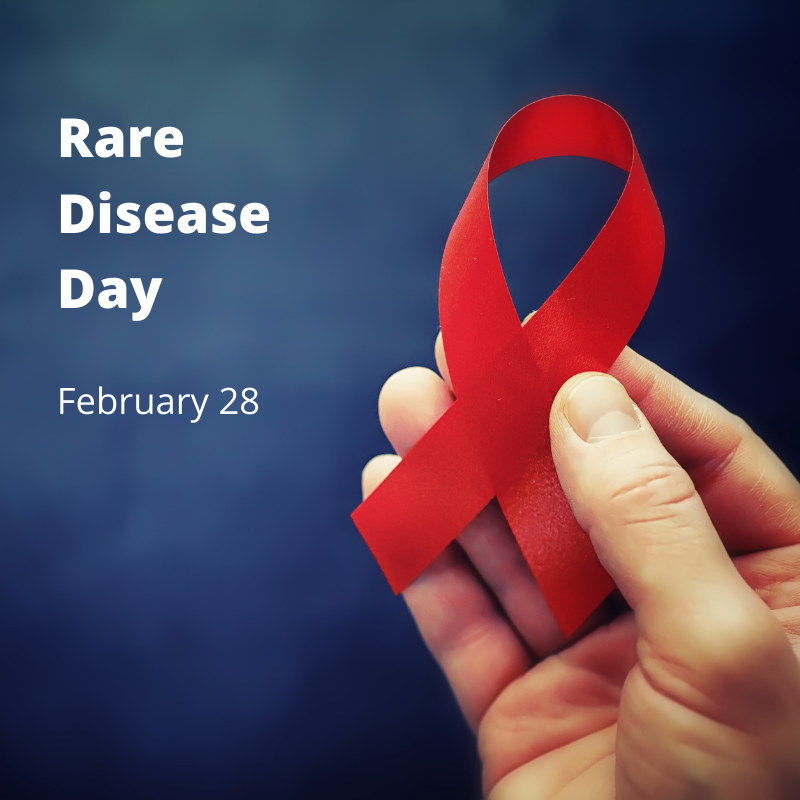International rare disease day
On February 29, the International day of rare diseases is celebrated all over the world.
This date of its celebration is symbolically connected with a rare day of the year. The main purpose of this day is to draw society's attention to the problem of people with rare diseases.
Rare or orphan diseases (rare disease, orphan disease) are diseases that affect a small part of the population. According to the WHO, only about 7% of the world's population suffers from orphan diseases. They are most often genetic and occur with a frequency of 1 case per 10,000 people, and their symptoms do not always appear immediately after birth
Rare diseases are more difficult to diagnose, many doctors do not even have information about them, and due to the lack of mass demand, the creation of drugs for such diseases is not profitable for pharmaceutical giants.
Despite the difference in diagnoses, patients face the same problems: inaccessibility of information about the disease, difficulties in diagnosis, treatment and rehabilitation, which often leads to early and irreversible complications and difficult socialization of patients.
There is no single universally accepted definition for rare (orphan) diseases, nor is there a single criterion for assigning diseases to this group. There are more than 8 thousand rare life-threatening diseases in the world, 8 out of 10 diseases are caused by genetic abnormalities and about 70% of them begin to appear in childhood and 30% of patients with rare diseases die before the age of five.
But there are also hereditary conditions that allow for a more or less peaceful life. For example, some forms of palm and plantar hyperkeratosis only manifest themselves in rough skin on the palms and soles. This causes trouble, but does not greatly affect the quality of life.
The orthopathic diseases most commonly seen in dermatology include ichthyosis and bullous epidermolysis (BE).
Ichthyosis (from Greek ichthys-fish) is a heterogeneous group of skin diseases characterized by a generalized disorder of keratinization, clinically manifested by diffuse hyperkeratosis. There are both hereditary and acquired forms of ichthyosis. Congenital ichthyosis non-syndromal: the frequency of occurrence of this form - 1 in 300 thousand newborns; congenital ichthyosis syndromal: occurs 1 in 200 thousand. Due to mutations in genes common to all forms of ichthyosis is a genetically determined change in the epidermis, which leads to a violation of its barrier function and reduced ability to bind water. Depending on the severity of clinical manifestations, ichthyosis can be severe, moderate and late (manifested not immediately after birth).
The only way to prevent congenital ichthyosis is genetic counseling. Amniocentesis with subsequent analysis of amniotic fluid and chorionic villus biopsy can be used. However, invasive methods increase the risk of spontaneous abortion, so they are rarely used in practice. In the case of an aggravated anamnesis for this disease (there are carriers of the mutation), it is recommended to refuse pregnancy. As an option, couples are offered IVF or adoption.
Since December 2019, the Kudakon-Shaparakho project has been operating in Tajikistan under the auspices of the Russian Foundation "Children of Butterflies". To date, more than 90 patients with EB have been identified and registered in the country. They are constantly provided with material assistance and necessary medicines for treatment, and public attention is drawn to the problems of patients. The Foundation also provides information, psychological and legal assistance to patients and their relatives. In addition, training seminars are held for regional doctors, medical literature is published, and cooperation with pharmaceutical companies is actively pursued to analyze and select medications and care products for ME patients.
Diagnosis of orphan diseases consists in preventing the birth of a sick child in the family using prenatal diagnostic technologies and diagnosing the carriage of pathological genes. Prenatal diagnostics should be carried out in consultative-diagnostic centers for all pregnant women registered at the women's clinic. It makes it possible to detect developmental disorders of the future child (including genetic disorders) as early as in the first trimester of pregnancy.
In order to solve the problems of patients with rare diseases, it is necessary to raise awareness of rare diseases among both doctors and patients, to stimulate cooperation and knowledge exchange both within the country and within the global community; to create centers for orphan dermatoses, where patients can receive outpatient and inpatient qualified assistance and necessary examinations.
Dyrda N.I. - c.m.s., associate professor of the department of dermatovenerology named after corresponding member
of the Academy of Sciences of the Republic of Tajikistan, d.m.s., professor Zoirov P.T.
of the SEI “Avicenna Tajik State Medical University”
translated Ismoilov R.

